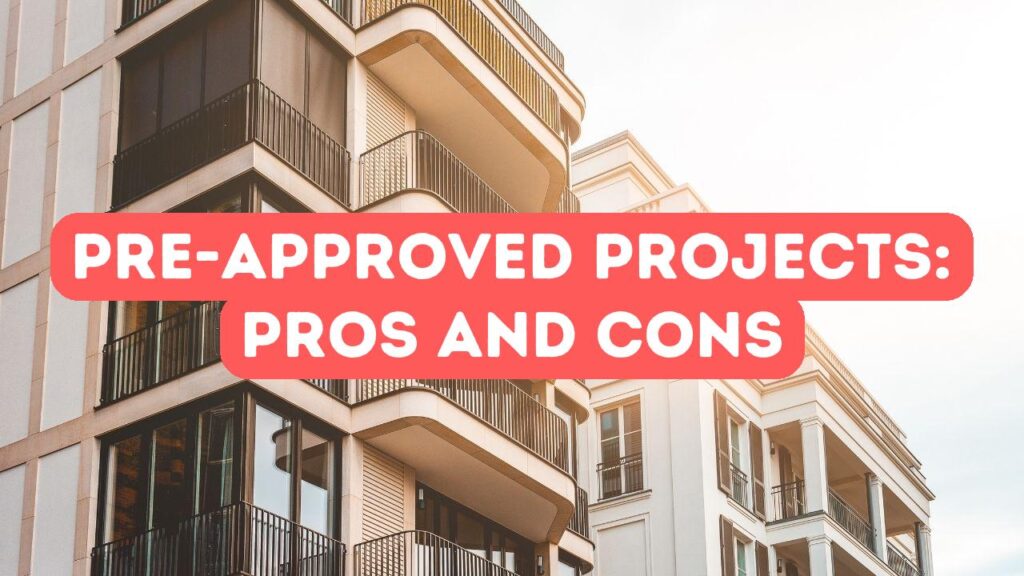Investing in pre-approved projects can be a double-edged sword, offering both investment benefits and risks for the unprepared. On one hand, these projects, especially in real estate, often come with a seal of approval that can make them seem like a shoe-in for success. Buyers might think they’ve struck gold, avoiding pitfalls most project investment risks present. Yet, not all that glitters is gold. Thoroughly understanding the project investment risks is crucial before diving in. Just because a project is stamped as pre-approved doesn’t mean it’s free from challenges. Leaning too heavily on a project’s pre-approved status can lull investors into a false sense of security. Real estate projects, for instance, might face unexpected delays or budget overruns. The trick is to balance the potential gains against these hurdles efficiently. Knowing the pros and cons is key before committing your hard-earned money to pre-approved projects.
Analyzing the Benefits of Pre-Approved Investments
Investing in pre-approved projects can pave the way to financial growth and security. By focusing on pre-approved projects, investors might reap significant investment benefits, such as potentially higher returns and reduced risk, thanks to the due diligence already performed. Real estate projects, in particular, can benefit from pre-approval, as they often come with a badge of credibility that reassures potential buyers. Imagine easing into the market with a cushion of assurance, knowing the groundwork has already been laid. This sense of security isn’t just a safety net—it’s a launchpad for informed decision-making. However, while the landscape offers promise, it requires careful navigation. Understanding the importance of a balanced view helps investors dodge the risks of becoming complacent, making it crucial to keep a keen eye on both the advantages and the potential pitfalls of these pre-approved ventures.
When it comes to analyzing the benefits of investing in pre-approved projects, one can quickly see the allure. These investments, especially in real estate projects, often shine with a promise of reduced risks. Pre-approval acts like a lighthouse, guiding investors through the foggy uncertainties of traditional investments. The foundation of these pre-approved projects typically includes thorough vetting, which identifies potential project investment risks upfront. This preparatory work can provide a safety net, allowing for more strategic planning. Additionally, the potential for higher returns is enticing, offering a tantalizing prospect for those familiar with the art of investment. However, it’s essential to remember that the label of pre-approval doesn’t eliminate all challenges; it merely sets the stage. The real investment benefits arise when these projects are approached with a keen eye, ensuring every stone is turned and benefits truly maximized.
Investing in pre-approved projects offers a unique convergence of security and opportunity, especially within real estate projects. Pre-approved projects often come with completed due diligence, which can diminish project investment risks and provide investors with a sense of safety. The groundwork done beforehand means these investments can act as a barrier against the stormy weather of unexpected setbacks. The clarity brought by pre-approval helps in forecasting potential returns, drawing a clearer picture of investment benefits. A core advantage here is the ability to tap into structured planning, a vital asset when diving into real estate projects. While the path seems smoother, it’s crucial to remain vigilant; the substance of any investment lies in constantly reassessing the landscape. Like a skilled navigator, maintaining a keen perspective allows you to steer through the fog, ensuring that the investment’s potential becomes a reality and not just a hopeful vision.
Potential Risks of Pre-Approved Projects
Even with the allure of Investing in pre-approved projects, there’s no safety net that guarantees a smooth sail. Potential risks lurk in the shadows, undeterred by pre-approvals. One key concern is overconfidence in these projects, which can cloud judgment. This often happens in Real estate projects where flashy brochures promise the moon but deliver less. Unexpected market shifts could spell trouble, drastically affecting ROI. Pre-approved projects might face delays or spiraling costs, turning what seemed a golden ticket into an albatross. Investors must be wary of the mirage these projects sometimes create. Lack of due diligence can open Pandora’s box of Project investment risks previously unseen. Though the seal of approval suggests reliability, nothing beats a personal vetting process. Just like a poker game, knowing when to hold ’em and when to fold ’em is the name of the game. Tread wisely and evaluate beyond the approval stamp.
In the landscape of Investing in pre-approved projects, it’s easy to be dazzled by the apparent security they promise. However, lurking beneath the surface are potential pitfalls that must not be overlooked. For instance, Real estate projects often grapple with unexpected legal complications that can tie up investments and delay progress. With Investment benefits painted vividly, it’s crucial to remain grounded. Project investment risks are not solely about the financial aspect; regulatory changes and economic downturns can turn a seemingly perfect venture into a challenging ordeal. Pre-approved projects might appear as a bedrock of security, but improper management or unforeseen natural disasters can transform stability into uncertainty. Investors should arm themselves with knowledge and keep a keen eye on market trends. The key is not to be swayed by the allure but to watch for the hidden currents that can drag your investment dream under.
In Investing in pre-approved projects, the risks can often loom larger than anticipated. Pre-approved projects may lure investors with promises of Investment benefits, but such ventures aren’t immune to pitfalls. Real estate projects, in particular, present Project investment risks like any other. Fluctuating property values can throw financial projections off course. And don’t forget about interest rates—an unexpected hike might inflate carrying costs, making profitable exits harder to achieve. Other considerations include the reliability of contractors and developers, whose missteps can derail timelines and budgets. Overlooking these factors can lead to investor regret. Always remember that a pre-approved stamp is only part of the puzzle. You should not rely solely on its implied assurance. Delve deep into market conditions and have contingency plans in place. Protecting your investment requires more than just hopeful optimism; it demands a blend of strategic foresight and calculated risk management.
Strategies for Successful Investments in Pre-Approved Opportunities
Investing in pre-approved projects can be streamlined with the right strategy. First, do your homework. Just because a project is labeled as pre-approved doesn’t mean you can skip the due diligence stage. Analyze the project investment risks, and pay attention to any red flags such as financial inconsistencies or unrealistic timelines. It’s also wise to get involved with reliable partners who have a proven track record with similar real estate projects. These allies can provide invaluable insights and help you access the best investment benefits. Moreover, maintain a balanced portfolio to cushion any unfavorable turns. It’s key to remember that investing isn’t a gamble; it’s a calculated move. Keep your eyes on clear goals and don’t let the excitement of a pre-approved label overshadow critical assessment. That way, your investment stands a solid chance to thrive amidst the ebb and flow of the market.
Investing in pre-approved projects with good strategies can set the stage for lucrative returns. Firstly, it’s vital to keep your ear to the ground and tune into market trends. Understand where investment benefits overlap with your interests in real estate projects. Diversification is your ally here; don’t put all your eggs in one basket. Investing in a mix of pre-approved projects can shield you from project investment risks. Additionally, harness technology for data analysis to unearth hidden patterns or inconsistencies in official endorsements. Be proactive in attending industry events, as networking can lead to discovering pre-approved projects flying under the radar. Seek opportunities where value can be added, whether it’s through renovations or innovative use of resources. Ultimately, successful investment hinges on a blend of thorough research and calculated risks, ensuring that your strategy aligns with long-term goals, offering a steady bridge over unpredictable waters.
Investing in pre-approved projects doesn’t mean simply following the herd; effective strategies demand a deeper dive. Begin by building an arsenal of knowledge about real estate projects and their landscapes. This insight arms you against project investment risks, turning potential pitfalls into stepping stones. Use the allure of investment benefits to your advantage but don’t let them cloud your judgment. Keep a skeptical eye on the shiny promises made by pre-approved projects—remember, if something seems too good to be true, it often is. Constant dialogue with financial advisors and seasoned investors is invaluable, providing you with practical wisdom and fresh perspectives. Secure your investments by implementing measures such as layered approvals and fallback plans, which offer a safety net if things go awry. By transforming caution into a habit, you thread a fine line between ambition and acumen, steering your ventures smoothly through the often turbulent real estate waters.







